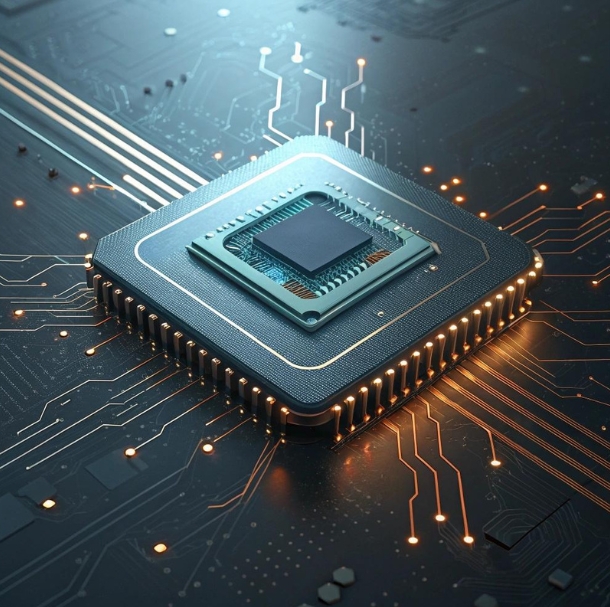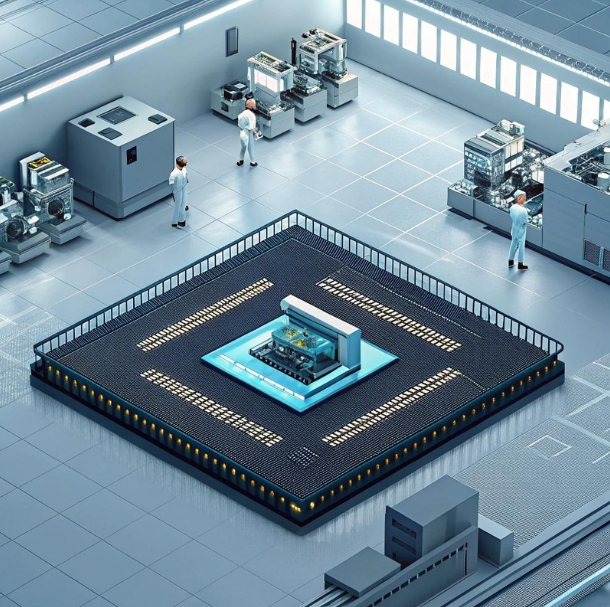Today, smart processors are found in consumer electronics, industrial systems, medical devices, and aerospace platforms. They enable on-device AI capabilities like face recognition, predictive maintenance, real-time translation, and autonomous navigation.
The term “smart processor” refers to chips that do more than just execute instructions—they interpret context, optimize performance, and often support machine learning workloads natively. These are not your average CPUs or GPUs. They’re designed to run deep learning models efficiently, with a focus on inference at the edge and energy-aware performance.
Not all chipmakers are created equal. An AI chipmaker specializes in building processors optimized for neural workloads—specifically, tasks like object detection, language understanding, and reinforcement learning.
What distinguishes these chipmakers is their approach to architecture. Instead of relying on brute-force computation, they design chips that maximize efficiency using parallelism, sparsity, and quantization. This allows even compact processors to achieve massive performance per watt ratios.
Some AI chipmakers focus on edge inference, offering low-power solutions for IoT, automotive, and robotics. Others concentrate on data center performance, enabling hyperscale AI deployments with server-class NPUs or AI accelerators.
They also invest heavily in software ecosystems. A smart processor is only as good as the tools that support it; compilers, SDKs, model optimizers, and integration libraries that help developers bring AI to life across diverse platforms.
From CPUs to NPUs
The transition from CPUs to NPUs (Neural Processing Units) marks a fundamental shift in computing philosophy. CPUs were designed for sequential logic. NPUs, on the other hand, are built for matrix math—the heart of deep learning.
As neural networks became the standard model for computer vision and natural language tasks, traditional processors began to show their limits. Even GPUs, while highly parallel, weren’t purpose-built for sparse tensor operations and low-precision inference.
That’s where NPUs and other specialized smart processors came in. By rethinking how data moves through the chip—how it’s stored, accessed, and transformed, AI chipmakers created new pipelines that are faster and more efficient for specific workloads.
The result is hardware that performs billions of operations per second without drawing enormous power, making AI applications viable in environments that were once off-limits due to energy or size constraints.

Smart Processors in Edge Devices and Embedded Systems
Edge computing demands more than just speed—it demands intelligence without dependence on the cloud. Smart processors are uniquely suited for this, as they bring AI inference directly to devices that operate in isolation, latency-sensitive scenarios, or security-restricted environments.
Think of a drone analyzing aerial imagery as it flies, a medical device monitoring vital signs in real time, or a smart sensor adjusting industrial processes on the fly. These tasks can’t wait for a round-trip to a data center.
Smart processors embedded in these systems allow immediate decision-making. They’re often built with thermal and power constraints in mind, making them highly efficient without sacrificing capability.
AI chipmakers are designing these processors to handle everything from voice recognition in wearables to image classification in security systems—all in real time, without ever sending data off-device.
The Software-Hardware Symbiosis Behind Smart Processing
For a smart processor to perform its duties efficiently, hardware must work in harmony with software. AI workloads are complex, and running them efficiently depends on seamless integration between compilers, runtime environments, and model optimizers.
Many AI chipmakers provide complete software stacks alongside their hardware. These include tools that convert standard models (like those built in TensorFlow or PyTorch) into formats optimized for their unique chip architecture.
Framework compatibility, memory allocation, and scheduling all play a critical role in achieving low-latency, high-accuracy AI on-device. Without tight integration, even the most powerful chip can underperform.
This synergy ensures that smart processors deliver consistent performance across diverse workloads, from audio processing to computer vision and sensor fusion.
Green AI at the Core
As AI adoption grows, so does its energy footprint. Training large language models or operating always-on detection systems can consume enormous amounts of power.
Smart processors, however, are built with sustainability in mind. Their architectures are optimized to deliver high performance with minimal energy use. Some chipmakers even design their products using recyclable materials or carbon-neutral fabrication techniques.
In applications like agriculture, logistics, or environmental monitoring, smart processors help reduce overall energy consumption by enabling targeted, efficient decision-making at the edge.
This “Green AI” movement is pushing AI chipmakers to lead not just in performance, but in responsible innovation. Efficiency is no longer just a feature—it’s a mission.

What the Future Holds for AI Chipmakers and Smart Architectures
Looking ahead, smart processors will become even more adaptive. Technologies like 3D chip stacking, chiplets, and dynamic voltage scaling will allow for AI workloads that adjust in real time based on task complexity and context.
We’ll also see more cross-domain smart processors—chips that combine vision, language, and audio processing in one compact unit, capable of running multimodal AI with minimal latency.
AI chipmakers are already exploring neuromorphic computing, photonic chips, and quantum-adjacent architectures that could redefine what’s possible at the edge.
Whether embedded in satellites, wearables, or smart cities, the smart processors of tomorrow will continue to evolve—learning, adapting, and optimizing our world with every cycle.
FAQs
1. What is a smart processor and how is it different from a CPU?
A smart processor is a chip designed to handle AI and machine learning tasks more efficiently than traditional CPUs, offering real-time inference, lower power consumption, and built-in neural processing capabilities.
2. What does an AI chipmaker do?
An AI chipmaker designs and manufactures specialized processors optimized for artificial intelligence workloads, such as neural network inference, computer vision, and speech recognition.
3. Why are smart processors important for edge devices?
Smart processors enable real-time AI computation directly on the device, eliminating the need for cloud-based processing, reducing latency, improving privacy, and enhancing performance in constrained environments.
4. How are NPUs different from GPUs or CPUs?
NPUs (Neural Processing Units) are purpose-built for AI tasks, focusing on matrix and tensor operations, while GPUs handle general parallel processing and CPUs manage broader logic tasks.
5. What industries are using smart processors today?
Smart processors are used across automotive, healthcare, consumer electronics, robotics, smart cities, industrial automation, and security systems, among others.
6. Can AI chipmakers support multiple AI frameworks?
Yes, leading AI chipmakers offer compatibility with popular frameworks like TensorFlow, PyTorch, and ONNX through custom compilers and SDKs optimized for their hardware.
7. Are smart processors more energy efficient than traditional chips?
Yes. Smart processors are typically optimized to deliver high performance-per-watt, making them ideal for energy-sensitive environments and sustainable AI applications.
8. How do software tools enhance smart processor performance?
Software tools like compilers, SDKs, and model optimizers allow developers to fine-tune AI models for specific chip architectures, improving speed, accuracy, and resource use.